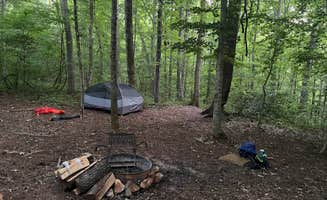Best Dispersed Camping near Bassett, VA
The Bassett, Virginia area connects to notable hiking trails and primitive camping options, with the Appalachian Trail system accessible within driving distance. Johns Spring Shelter on the Appalachian National Scenic Trail offers basic accommodations for hikers and backpackers seeking a rustic overnight experience. Within a broader radius, campers can also access the Shallow Ford Natural Area in North Carolina, providing a different camping environment with riverside sites. These locations represent the spectrum of primitive camping opportunities in the region, primarily catering to hikers and backpackers rather than vehicle-based camping.
Water access and planning are important considerations for campers in this region. Johns Spring Shelter lacks convenient water sources, with the nearest water approximately three miles north according to visitor reports. As one camper noted, "There is not a water source too close to the shelter. The closest one is about 3 miles North." Sites are generally flat and suitable for tent camping, though amenities are minimal. The Shallow Ford Natural Area offers a more serene experience with natural features. A visitor described it as "very peaceful" with "lots of shade" and mentioned "fire rings" and hearing "the river in the background."
Hiking opportunities enhance the camping experience throughout the region. The Appalachian Trail section near Johns Spring Shelter includes access to McAfee Knob, described by one hiker as "one of the most photographed spots on the AT." This landmark can be reached via an 8-mile day hike for those not staying overnight. The Shallow Ford Natural Area connects to the Mountains to Sea Trail, providing additional hiking options. Campers report wildlife viewing opportunities, with birds and squirrels commonly seen. The primitive nature of these sites means visitors should prepare for self-sufficient camping, bringing necessary supplies including water or filtration equipment, especially when staying at Johns Spring Shelter where water access is limited.



